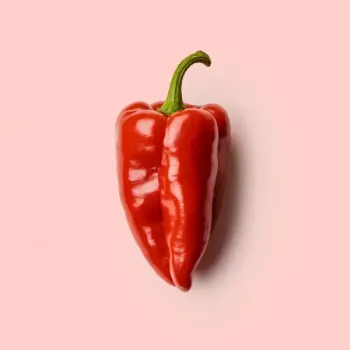Cayenne Pepper and Paprika are distinct spices; cayenne delivers pungent heat, while paprika ranges from sweet to smoky, providing nuanced flavors and vibrant color to culinary creations. They differ in heat levels and flavor profiles, affecting their interchangeability in recipes.

Cayenne Pepper is a hot chili pepper used to flavor dishes and is also known for its medicinal properties. It's typically dried and ground, resulting in a fiery powder that's rich in capsaicin and brings a pungent heat to any dish.

Paprika is made from ground bell peppers and other chili peppers, which can range from sweet to hot. It's a staple in Hungarian and Spanish cuisines, known for adding a warm, sweet, and mild earthy flavor along with a vibrant red color to dishes.
Cayenne pepper is significantly hotter than most varieties of paprika and has a more straightforward spicy profile. Paprika, in contrast, can vary from sweet to smoky, providing a more nuanced flavor profile along with its coloring properties. Cayenne pepper comes from the Capsicum annuum species, while paprika can be produced from multiple types of peppers. Texture-wise, cayenne is typically finely ground, and paprika can be found in various grinds from fine to coarse.

Your ultimate Recipe Box, Meal Planner, and Cooking Class all in one
Ideal for creating hot rubs for meats, cayenne pepper works well with barbecue, grilled items, and in marinades for a fiery kick. Expect a bold, spicy flavor that stands up to strong meaty tastes. Sweet or smoked paprika is excellent for adding a subtle depth and color to rubs for roasted or smoked meats without overwhelming the palate. It pairs well with chicken, pork, and beef, complementing their natural flavors.
Cayenne's heat can enhance vegetable dishes, soups, and stews. Use it sparingly to introduce a spicy contrast in cream-based soups or to add warmth to legume-based dishes like lentils and chickpeas. Paprika is versatile in vegetarian cuisine, perfect for seasoning roasted vegetables, in ratatouille, or as a garnish for hummus and other dips. It imparts a beautiful color and a gentle flavor that doesn't overpower the veggies.
In hot sauces and seasoning blends, cayenne pepper brings a clean heat. It's a key component in Cajun and Creole seasonings, and it's essential in hot sauce recipes for its spicy, sharp flavor. Paprika can be found in many spice blends, like goulash seasoning and as a mainstay in sauces such as sofrito, where it adds complexity and warmth. Smoked paprika, in particular, can give a barbecue-like essence to sauces.
Substituting cayenne pepper for paprika can significantly increase the heat of a dish, which may not be desired in all recipes. Conversely, substituting paprika for cayenne will decrease a dish's spiciness and add a sweet or smoky flavor. When substituting, consider the desired flavor profile and heat level of the final dish and adjust the amounts accordingly, as they are not a 1:1 substitution.
Both Cayenne Pepper and Paprika contain vitamins A and C, along with other beneficial antioxidants.
| Nutrient | Paprika ( per Teaspoon ) | Cayenne Pepper ( per Teaspoon ) |
|---|---|---|
| Fat | 0.3g | 0.3g |
| Protein | 0.3g | 0.2g |
| Calories | 6 | 6 |
| Vitamin A | 21% DV | 8% DV |
| Vitamin C | 2% DV | 2% DV |
| Carbohydrates | 1.2g | 1g |
Yes, cayenne pepper is significantly hotter than paprika, which ranges from sweet to mildly hot.
You can substitute cayenne for paprika, but be mindful of the heat difference. Start with a smaller amount and adjust to taste.
Cayenne pepper is best used in dishes where a prominent spicy heat is desired, such as in hot sauces, spicy rubs, and fiery marinades.
Yes, there are several types of paprika, including sweet, smoked, and hot varieties, each bringing a different flavor profile to dishes.
Absolutely, one of paprika's primary uses is to add a vibrant red color to dishes like paella, deviled eggs, and stews.